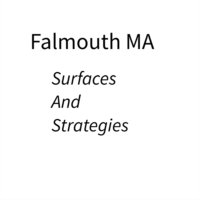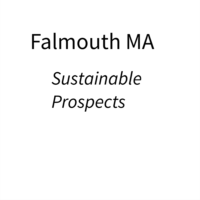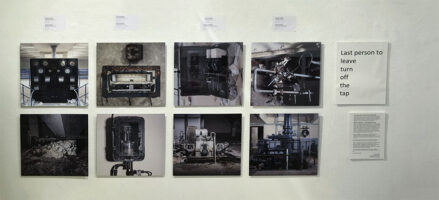For the video presentation in Module one I prepared the presentation using the same approach I have used when speaking at conferences as part of my current job. If I am doing a 30 minute presentation I will typically produce about six to seven slides including title and biography slide. I then produce a set of speaker notes to prompt me on key points I need to raise during he presentation. The slides were always designed to supplement the verbal communication and not detract from my key messages.
When I reflected back on the module one presentation I realised I realised I had not included key information and with the need to include specific quotes as part of this presentation I decided that a different approach was required and decided to create a full script for my presentation. The initial version was in excess of 1800 words could not be successfully delivered at an appropriate tempo within the target 10 minute timeframe. The following is a transcript of my final presentation including slides.
I am me. Simon Fremont the photographer. An individual.
Last week the photography show I asked if it was possible to get my portfolio reviewed.
The first question they asked me was what type photographer are you?
My response was my current images are probably best described as landscapes, though I do not consider myself as a pure landscape photographer.
Instead I am reminded of Camera Lucinda where Barthes writes “Photography evades us. The various distributions we impose upon it are in fact either empirical (Professional / Amateurs), or rhetorical (Landscapes / Objects / Portraits / Nudes) or else aesthetic (Realism / Pictorialism) in any case to be objective without relation to its essence, for these classifications might very well be applied to other older forms of representation. We might say that photography is unclassifiable. My practice is a photographic journal recording the different experiments and journeys that I undertake, as a photographer. Each body of work broadening my understanding and knowledge of the world around me. Photographer Jeff Walls expressed a similar view in the interview “Pictures Like Poems” about his work.
I will discuss two recent bodies of work their position in contemporary photography. One thing that is common in many of my images is that they raise questions rather than providing answers to the reader. Ideologically I do not subscribe to the view there is a singular reading of an image. Instead I believe that the readers own experiences will influence their reading of the image. A successful image is one that prompts the viewer to enquire more about the subject or reconsider a previously held view.
The first body of work I would like to explore in more detail today is entitled childhood memories. Like many parents my father was a keen amateur photographer using his camera to record Family events yet his work also took abroad and his camera would go with him.
In this pre-digital era, slide film was his chosen medium. In the evenings, as a family we would sit down to view the recently developed slides. He would provide commentary for the faraway locations that were shown alongside the familiar Family images.
A recent BBC show entitled “Smile! the nation’s family album” traced the evolution of the family album. The family album has become an object of nostalgic affection allowing us to validate our existence. I had wanted to undertake a family album project for sometime as the slides have been in my parents garage unseen for many decades. Following the recent loss my father-in-law the imputes the create this work was renewed.
 Initially I was unsure how to proceed. Similar to Barthes I did not want to use a scientific approach to codify the family album.
Initially I was unsure how to proceed. Similar to Barthes I did not want to use a scientific approach to codify the family album.
Instead seeking an alternative way explore the subject. The first box my father gave me contained loose slides. Rather than try sort the slides into their individual rolls of film I decided to place randomly into the projector.
Watching the stream of disjointed images made me reflect that as we get older our memories become jumbled up. For dementia suffers such as my Grandmother that jumbling can become extreme creating confusion of past realities. I decided to embrace the concept of blurred memory for the project.
I considered many different approaches to combine the images but finally settled on an approach that would allow me to retain the analogue aesthetic of Ektachrome from the donor images, through most of the creative process.
The first image titled “Child with scarecrow – uncles House New Jersey” is a double exposure that brings together an image of my brother in the field while we’re on holiday in the Channel Islands and an image of my uncle’s house in Chester New Jersey. I’m particularly happy with the way the muted tones the shingle walls of the House merge into the sky above the field, the Trace of the second image encourages to look again more closely.
The image of child in the field could be seen as, disturbing because the scarecrow is wearing a military uniform. These different components encourage the reader to ask questions around what happens prior and after the image was recorded.
The next image is a combination of Three different slides the first image is the obvious outline of the Sydney Harbour Bridge the second image is taken from Los Angeles includes the familiar Palm tree and the distant hills the Third image is again from Australia of a eucalyptus tree.
The muted tones of the Ektachrome film again at to the nostalgic impact of the image. The outline of the bridge makes the picture at first appear familiar get the merging of the other images encourage the reader to come closer to decode the other elements of the image.
On one level this body of work is very personal to me as a unique and singular representation of childhood however the objects can be viewed as icons familiar to the reader that will encourage them to re-examine their own family album for hidden gems.
The second body of work is titled city canyons and explores the urban landscape and specifically the city of London. Cities and architecture have been the source the photographic inspiration the many photographers.
Once a photographer was Paul Strand who was born in the midst of one of the most exciting and innovative periods in the history of art. He created a style of photography that was both direct and dynamic.
The buildings around Liverpool Street station remind me of Strand image titled “New York”. While the narrow city streets and their earth tones remind me of the Arizona sandstone canyons.
The City Canyons sits somewhere between pictorialism and realism as the images have a painterly effect while the real image can still be discerned. The muted colour palate is muted playing toward the female of nature while the strong architecture of the buildings project the masculine sense of power.
The use of layers creates the impression of momentum drawing the reader in to the frame. While someone unfamiliar streets might find them intimidating almost claustrophobic.
The first image is titled “15 Eldon Street” is on the edge of the Broadgate development the man walking towards the camera acts as a point of reference, giving scale to the buildings that surround him. For me this image worked better than other images where the reader is hunting for a point of focus.
The second image is titled “71 Chiswell Street”. The Green glass to the left of the image acts as a counterpoint to an urban environment that is denuded of nature’s elements. As with the first image the presence of person helps give scale to the image.
I envision these images being printed at A0 or bigger as I feel the larger prints will have more impact. Commercially this is likely to reduce the number of people who would consider owning these images as a piece of art given the space required to hang them.
Since the start of both bodies of work I have taken time to get feedback from different sources including a review by a member of the BIPP. The feedback has been very consistent and positive recognising the merit of the two bodies of work.
I am exploring different avenues for how each body of work might become resolved.
Childhood memories references the subject of memory loss which is a highly relevant given the increase in the number of people being diagnosed with dementia. I am considering approaching the Dementia Society to see if they are interested using to help raise aware of this topic.
For City Canyons I am considering different ways to present the work. One option is to create multi-layer art piece like the work of Ardan Ozmenoglu and I have already created some test prints for this approach.
This crossover from photography to art is something that Stieglitz championed in later editions of Camera Works.
Roberts in her book about Camera Works commented “Steiglitz was always far more interested in the present and the future rather than the past.”
I plan to incorporate some elements form these images into my project “Tilbury to Harwich” while developing new approaches during the coming months, culminating in a resolved body of work in the summer of 2018.
References used in presentation


















Pingback: I am Me – Part 4
Pingback: I am Me – Part 3